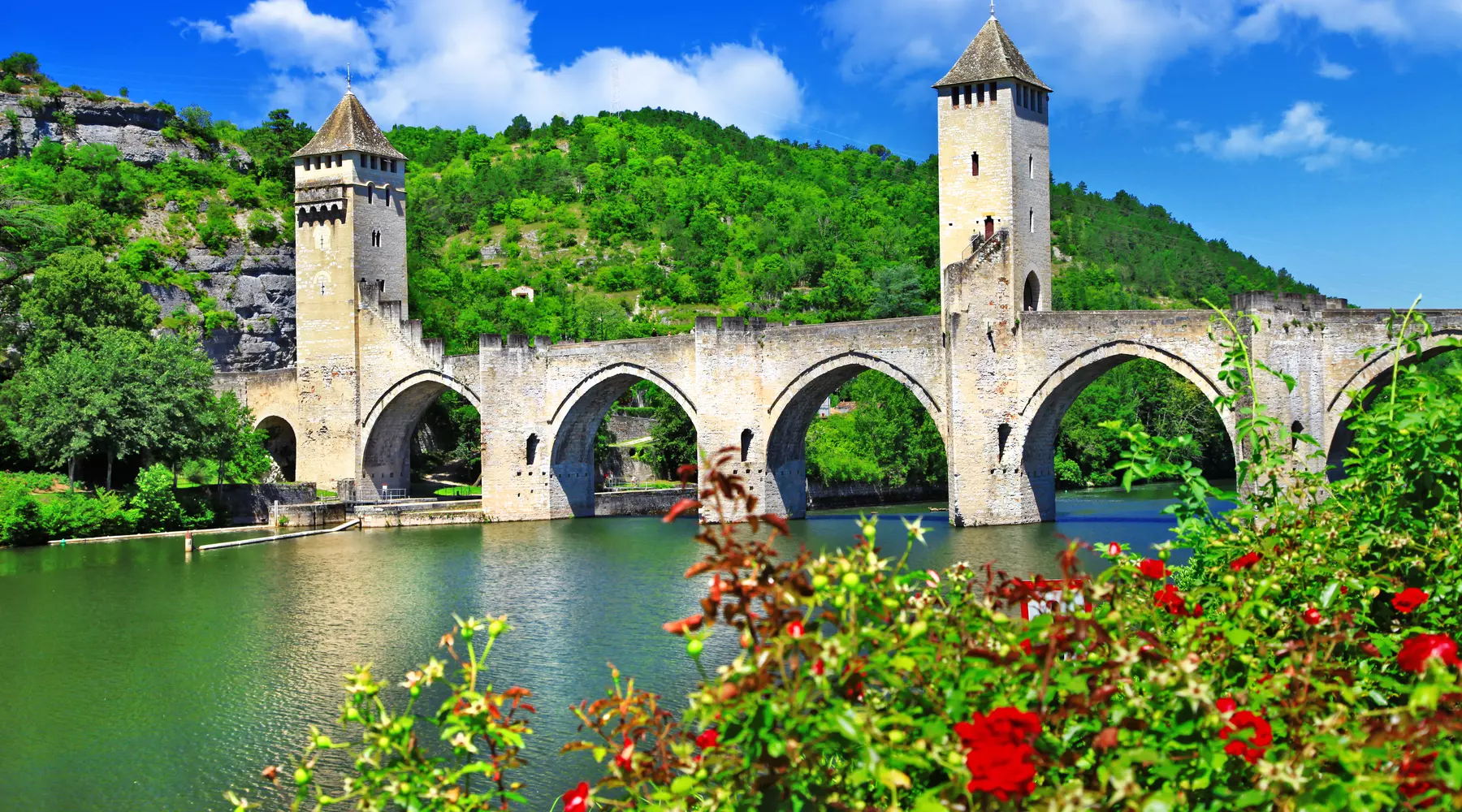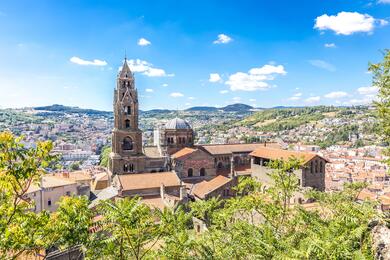
Le Puy en Velay - Nasbinals
The Way of Saint James de Compostela from Le Puy en Velay to Nasbinals.
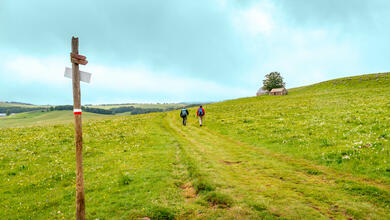
Nasbinals - Conques
The Way of St. James de Compostela from Nasbinals to Conques.
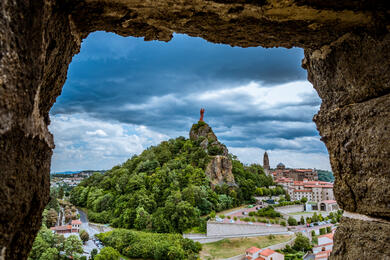
Le Puy en Velay - Conques
The Way of Saint James de Compostela from Le Puy en Velay to Conques.
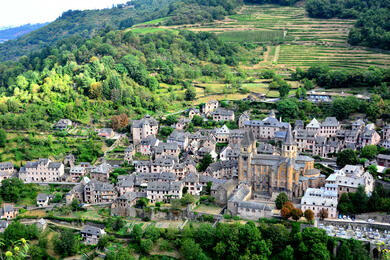
From Conques to Cahors
The Way of Saint James de Compostela from Conques to Cahors

From Cahors to Lectoure.
The Way of Saint James de Compostela from Cahors to Lectoure.
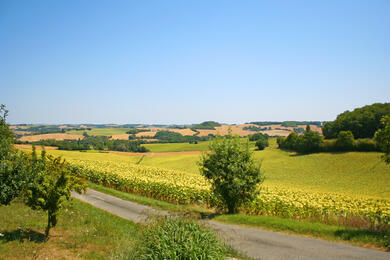
From Lectoure to Aire sur l'Adour
The Way of Saint James de Compostela from Lectoure to Aire su l'Adour.
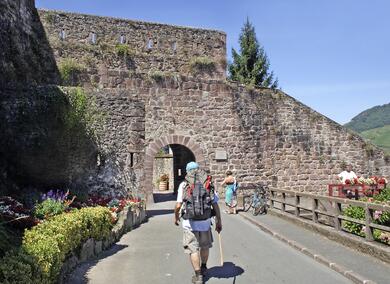
From Aire sur l'Adour to Saint Jean Pied de Port.
The Way of Saint James de Compostela from Aire sur l'Adour to Saint Jean Pied de Port.
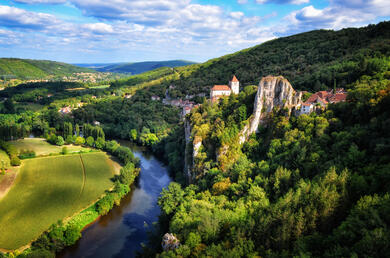
From Figeac to Cahors by the Célé.
The Way of Saint James de Compostela from Figeac to Cahors by the Célé.
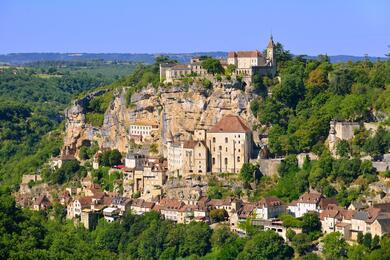
From Figeac to Cahors by Rocamadour.
The Way of Saint James de Compostela from Figeac to Cahors by Rocamadour.
The Puy Camino: a walk through time and culture
The Puy Camino, also known as the Chemin du Puy or Via Podiensis, is a historic pilgrimage route that begins in the French town of Le Puy-en-Velay. This iconic town, famous for its Notre Dame Church - a UNESCO World Heritage Site - has welcomed pilgrims for centuries. From this cathedral, perched high above the town, pilgrims descend 134 steps to begin their journey along the legendary route to Santiago de Compostela in Spain via the Camino Francés.
At over 750 kilometres, the Puy Camino runs through the varied landscapes of southern France. The route passes through regions such as Velay, Aubrac, Quercy and Gascony before culminating in Saint-Jean-Pied-de-Port, the final French stage. Along the way, pilgrims will come across medieval villages such as Saint-Côme-d'Olt, Saint-Chély-d'Aubrac and Saint-Cirq-Lapopie, many of which are listed as 'Plus beaux villages de France'.
Highlights of the Puy Camino
This journey offers countless cultural and historical treasures, including:
Conques: Known for its breathtaking abbey (built in the 11th century) and stunning medieval art.
Cahors: Famous for the Pont Valentré (built in th =e 14th century), its wines, and its history.
Moissac: Renowned for its cloister, tympanum, and Romanesque architecture.
Aire-sur-l’Adour: A village rich in heritage and picturesque views.
Saint-Jean-Pied-de-Port: The gateway to Spain and a vital stage for pilgrims.
The Puy Camino begins in the volcanic peaks of Velay, winds through the dramatic gorges of the Allier and crosses the windswept plateau of Aubrac, one of the most challenging sections of the route. Saint-Chély-d'Aubrac, at 1,360 metres, offers breathtaking views of this rugged landscape. Further along, pilgrims pass through the limestone cliffs and medieval towns of Quercy, including Saint-Cirq-Lapopie. In the Lot Valley, the river takes pilgrims through villages such as Estaing, Espalion and Cahors before entering the rolling hills of Gascony. The Puy Camino also passes through Aumont-Aubrac and Saint-Alban-sur-Limagnole, important stops for pilgrims.
The Spirit of the Camino
The Puy Camino is much more than a walk; it is a journey through time, culture and spirituality. Each stage offers the opportunity to discover regional delicacies, from the lentils of the Velay to the Armagnac of Gascony. As a pilgrim, you will stay in a gîte (a type of traditional accommodation offering simple accommodation and meals for pilgrims), a hotel or an inn, where each day we will choose the best option for you to experience the warmth of French hospitality. The beautiful landscapes of the route, from the volcanic peaks of the Velay to the medieval towns along the Lot and Célé rivers, will make each day unforgettable.
The camaraderie of the Camino is one of its defining characteristics. Pilgrims share stories, make connections and reflect on the timeless beauty of France's towns, villages and countryside. Stops such as Figeac, Aumont-Aubrac and Saint-Jacques-sur-Célé enrich the journey with their historical significance. Small villages such as Les Estrets, Saint-Alban-sur-Limagnole and tiny hamlets along the Célé river add charm to each day's walk. Each step through these medieval landscapes reveals the enduring spirit of the pilgrimage.
A Journey of Transformation
The Puy Camino’s final French stage, Saint-Jean-Pied-de-Port, serves as a gateway to the Camino Francés in Spain. From here, pilgrims cross the Pyrenees to continue their journey toward Santiago. This pilgrimage is transformative, blending the beautiful landscapes of France with its rich history and vibrant culture. From the volcanic peaks of Velay to the Lot and Célé valleys, every stage brings pilgrims closer to the essence of the Camino.
With its remarkable heritage, diverse routes, and unforgettable landscapes, the Puy Camino invites pilgrims to walk through centuries of history, connect with fellow travelers, and experience the profound beauty of this legendary journey. Whether in Aumont-Aubrac, Conques, or Saint-Jean-Pied-de-Port, the Puy Camino remains one of the most meaningful and beautiful routes for those seeking a spiritual, cultural, and personal transformation. Each day’s walk unveils the true spirit of the Puy Camino, where the connection between pilgrims, landscapes, and history continues to thrive.
